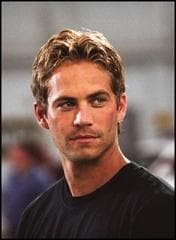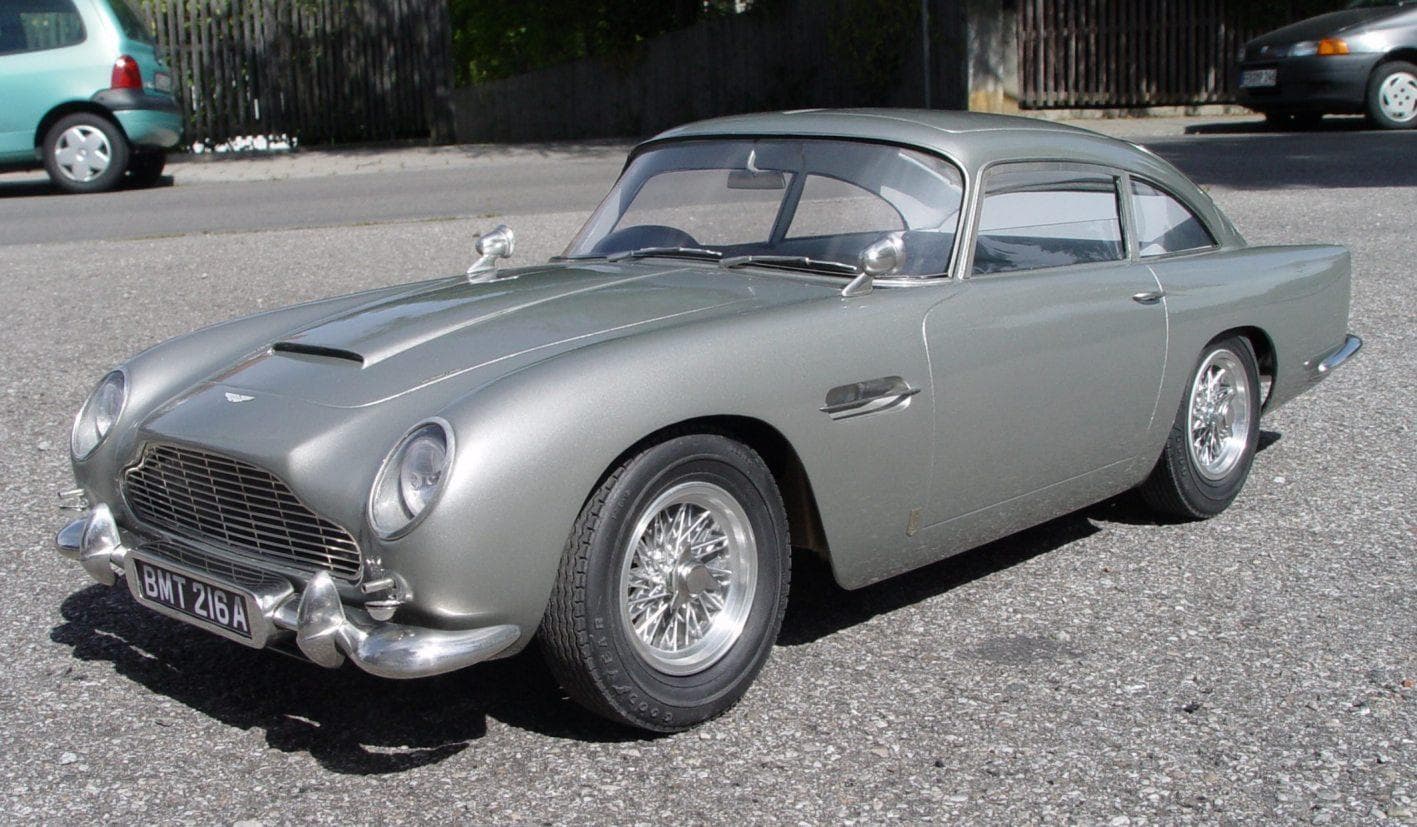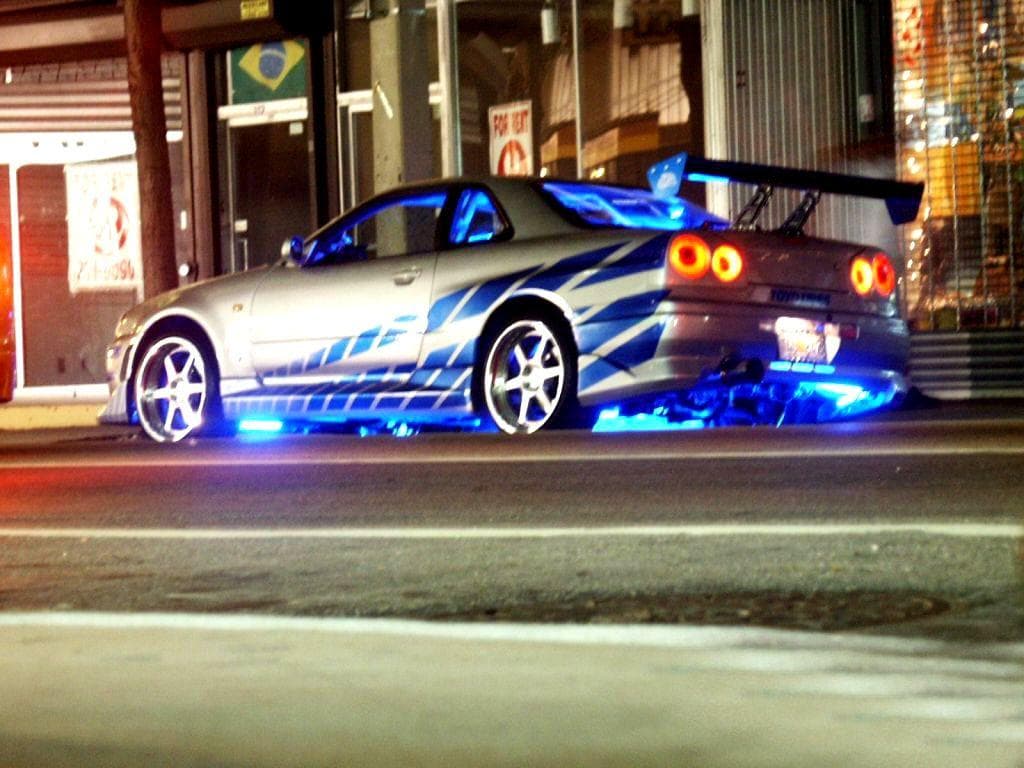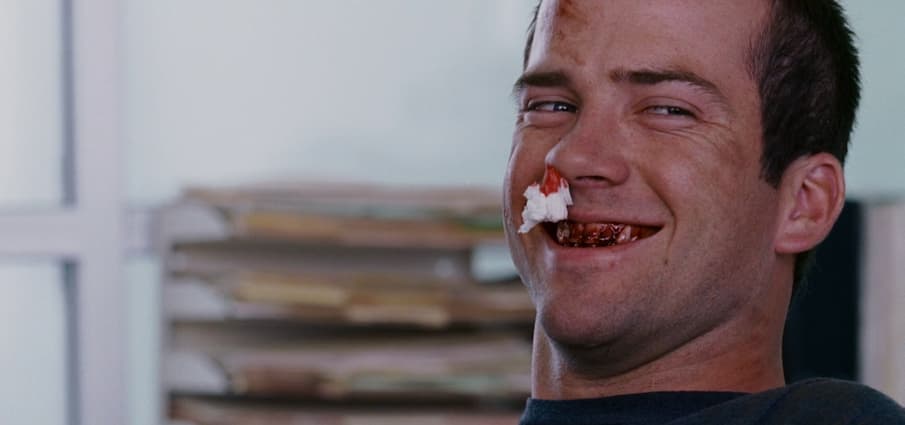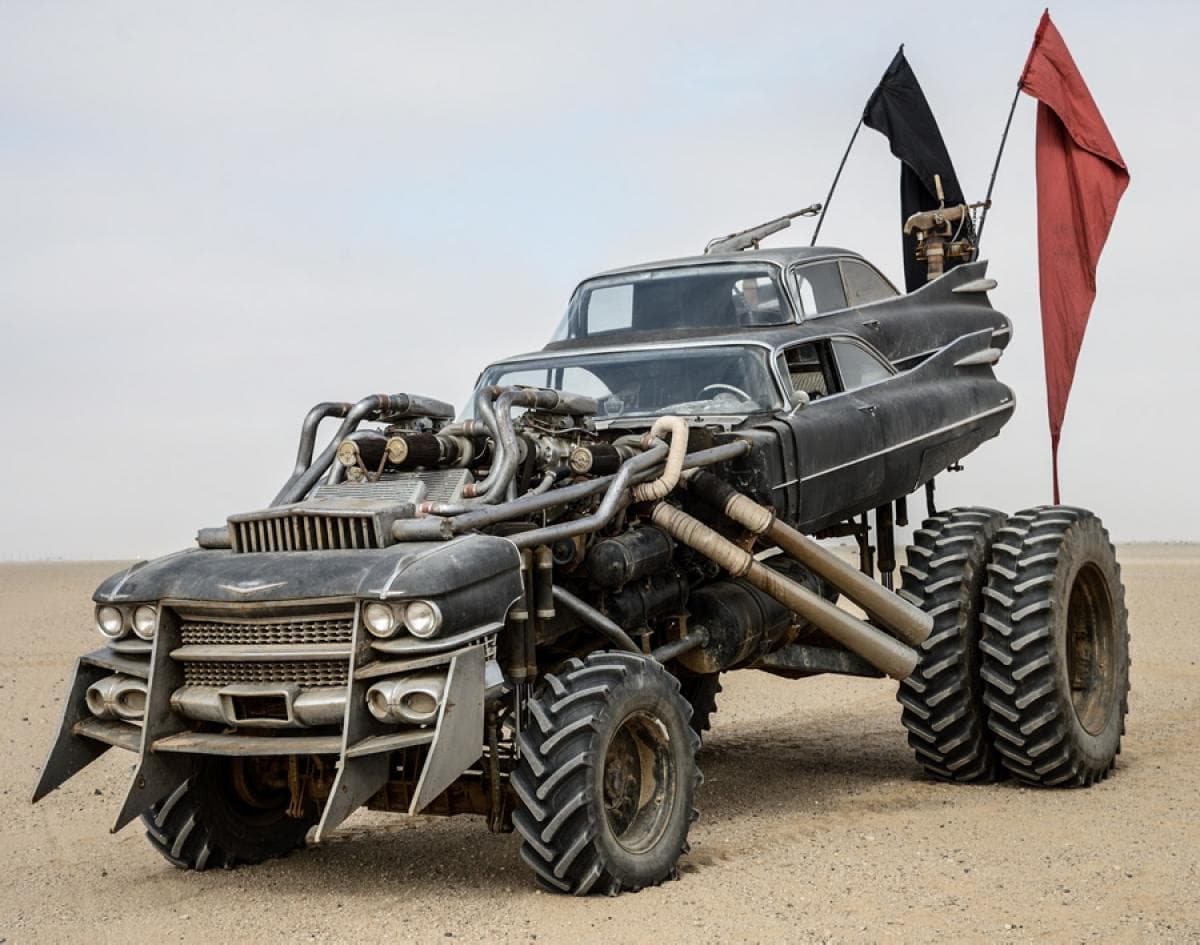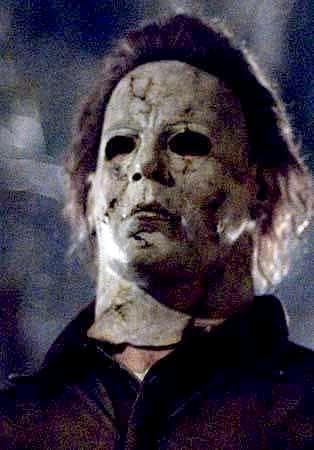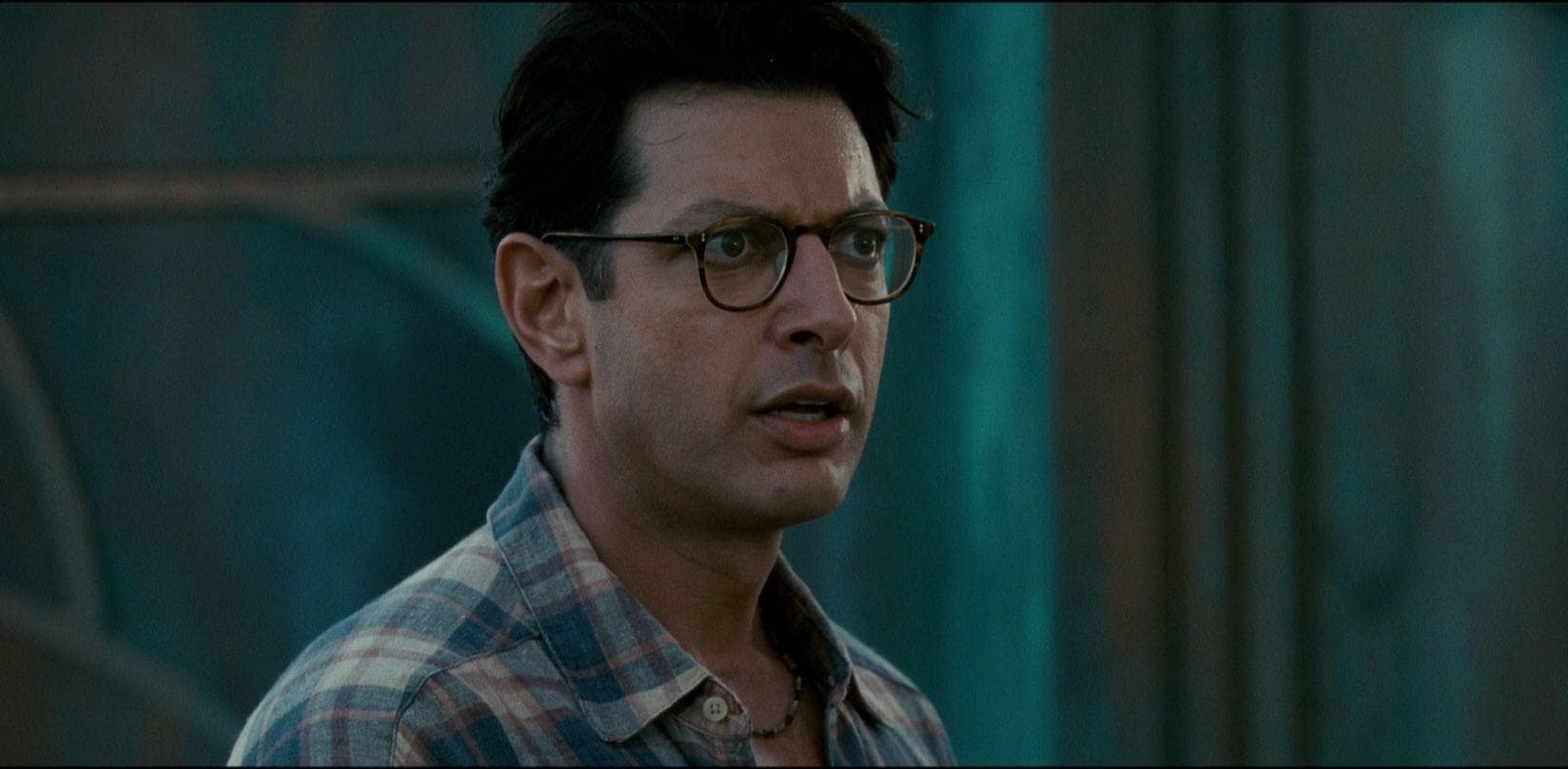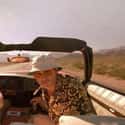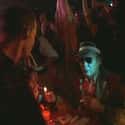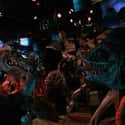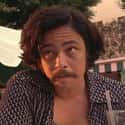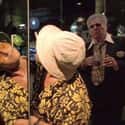-
(#11) Many Las Vegas Casinos Refused To Work With The Filmmakers
Due to the unflattering image the book Fear and Loathing in Las Vegas paints of the infamous city, many casinos and hotels refused to work with the film's producers. That forced director Terry Gilliam to get creative. Once Circus Circus turned Gilliam down, he invented a faux establishment named Bazooka Circus to avoid any legal issues.
The filmmaker used a 20-foot clown head with an open mouth as the casino's entrance and re-created the actual venue's carousel bar - though in the film, it rotates in the opposite direction.
A few smaller casinos, like the Binions, the Riviera, and the Palace Hotel, agreed to allow filming, but remained open to the public. The crew could use two lanes of the Palace Hotel's six and had to work around visitors' cars and actual gamblers. Filming occurred between 2 am to 6 am, and the set lights couldn't be bright enough to blind patrons. Gilliam remembered:
We could control six tables that were close to camera. So we had our extras there and the rest of the scene was the casino running as normal... The strange thing was we couldn't use phony money at the tables; we had to gamble with real money, and the dealers are their dealers! So we had a chance of either losing the budget or doubling the budget.
Re-creating the Las Vegas of the 1970s also proved to difficult, requiring computer generated imagery as well as footage from the '70s television show Vega$ projected behind the actors.
-
(#3) Johnny Depp Lived In Hunter S. Thompson's Basement
Prior to filming, Johnny Depp lived with Hunter S. Thompson to study him closely. The author put him to work editing letters, and Depp stayed in a basement room he referred to as "the dungeon." The actor explained:
It's a little room with makeshift bookshelves and a lot of spiders, and a small, little sofa thing that folds out into a bed, and this enormous keg of gunpowder, which they let me know about when I'd probably been there, smoking in bed, about five days.
The two men went to sleep around 10 am and woke for breakfast around 7 pm, spending their time watching television, visiting bars, or sitting around the house talking. Eventually, Thompson gave Depp access to boxes of his files. They held notes, drafts, and notebooks of his work.
Reading through the Vegas book box, Depp learned Thompson toned down his story for print. "It was probably more outrageous, and more insane, than he can write. I think the book is a calmer version of what actually happened," said Depp.
Eventually, the two became like brothers, looking out for one another. Thompson made sure Depp ate and never took more hallucinogens than he could handle.
-
(#9) It Was Incredibly Difficult To Film Hunter S. Thompson's Cameo
Hunter S. Thompson stayed at his home in Colorado during the 11 weeks of filming, though he ventured to Los Angeles to film a cameo. He appears in a club flashback and shares a glance with Johnny Depp.
According to a Rolling Stone reporter following him that day, Thompson kicked chairs around in Depp's trailer, wailed like a child when he couldn't find his cigarettes, and drew a mustache on his face using permanent marker when he got bored. "It took the woman 20 minutes to get it off," Thompson said.
When he was finally called to the set, the author threw grapes at director Terry Gilliam until the crew filmed three takes.
-
(#12) The Lizard Scene Only Features Eight Animatronics
Both camera work and special effects add to the bizarre visuals in Fear and Loathing in Las Vegas. For the memorable scene in which Raoul Duke starts tripping and suddenly finds himself in a bar surrounded by giant lizards, the filmmakers used animatronics instead of computer-generated graphics.
They ordered 25 lizards, but only received eight. To make the bar seem packed with lizard-people, the crew got creative, dressing the lizards in costumes and changing their clothes between shots so they all looked different. The crew also shot parts of the scene in different areas around the bar to make it look like the lizards were in different spaces.
-
(#6) Benicio del Toro's Performance Cost Him Future Job Opportunities
In order to better resemble the fictional Dr. Gonzo, Benicio del Toro ate 16 donuts a day over an eight-week period to gain a lot of weight rapidly. "I didn't get a trainer. I did it macho style, stupid-style. I gained the weight really quick and it took a while to get it off," the actor recalled.
After production on Fear and Loathing in Las Vegas finished, del Toro struggled to find more work. He explained:
In between work, I had meetings and people saw me and said, "Oh my God, this guy went off the rails"...
People in Hollywood can be as gullible as anywhere. Just because they’re in the world of make-believe doesn’t mean they don’t believe it. After I tried to get a couple of jobs, the feedback I got was that people didn’t want to see me because, "We know he’s got a drinking problem..." And the only reason for that was because they had seen Fear and Loathing. Maybe it was a compliment.
The actor managed to lose the weight, but didn't appear in a movie for another two years.
-
(#2) The Filmmakers Used Different Techniques For Different Substances
According to director Terry Gilliam, the film recreates the effects of taking various psychoactive substances, "with all the uppers and downers in it. Both the most manic wonderful stuff and the really depressing stuff." To achieve this visual experience, the filmmakers used jump cuts, recorded scenes at odd angles, shot in slow-motion, and employed a wide-angle lens to make scenes uncomfortably disorientating.
To get the viewer into the characters' heads, director of photography Nicola Pecorini used a different film technique for each substance depicted in the film. Mescaline can create an altered sense of time and make colors seem more intense, so Pecorini shot those scenes with soft lighting and a similar color palette, causing colors to blend into one another. Acid scenes make use of the wide-angle lens, distorting the surroundings and creating a sense of expansion. Sections involving adrenochrome use closeups to imitate claustrophobia and disordered thoughts.
New Random Displays Display All By Ranking
About This Tool
Fear and Loathing in Las Vegas is an adventure movie, released in 1998. The movie tells the story of a sports journalist Duke and his lawyer friends driving to Las Vegas to find their American dream and finally turned into a nightmare full of fear and hatred due to drugs and alcohol. Drugs, loss, and despair, Loneliness, such a theme always attract a large audience.
This is a movie adapted from a news report by Hunter S. Thompson, but to be honest, the plot and logic of the movie are hard to be explained or understood. This page includes random 14 behind the scenes stories of the filming of the movie. Welcome to search for other interesting things with the tool.
Our data comes from Ranker, If you want to participate in the ranking of items displayed on this page, please click here.

